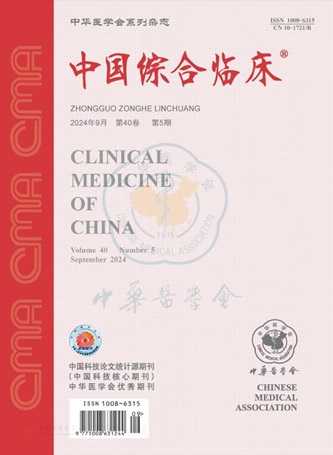低频超声联合高频超声诊断胆囊息肉样病变的临床疗效
引用次数: 0
摘要
目的探讨低频超声联合高频超声诊断胆囊息肉样病变的临床疗效,为临床诊断提供参考。方法选择汉口医院2013年1月至2017年1月收治的87例胆囊息肉样病变患者为受试者,对所有患者进行低频超声和高频超声检查,并与术后病理结果进行比较。比较低频超声与低频超声联合高频超声的诊断效果,分析两种检查方法与术后病理结果的一致性。结果87例患者术后病理报告显示,胆囊息肉59例(67.82%),腺肌症6例(6.90%),胆囊腺瘤10例(11.49%),小结节性胆囊癌症12例(13.79%),良性息肉样病变65例(86.67%),低频超声联合高频超声73例(97.33%)。联合高频超声诊断胆囊良性息肉样病变的准确性明显高于低频超声(χ2=5.797,P<0.05);低频超声和高频超声联合诊断胆囊良性息肉样病变的特异性和阳性预测值显著高于低频超声(90.00%和41.18%,97.33%和86.67%),差异有统计学意义(χ2=6.217,5.797,P=0.013,0.016)超声、低频超声与高频超声联合应用提高了胆囊息肉样病变的鉴别诊断效果,值得临床重视。关键词:胆囊息肉样病变;低频超声;高频超声波本文章由计算机程序翻译,如有差异,请以英文原文为准。
Clinical effect of low frequency ultrasound combined with high frequency ultrasound in the diagnosis of gallbladder polypoid lesions
Objective
To explore the clinical effect of low frequency ultrasound combined with high frequency ultrasound in the diagnosis of polypoid lesions of gallbladder, and to provide reference for clinical diagnosis.
Methods
From January 2013 to January 2017, 87 patients with gallbladder polypoid lesions in Hankou Hospital were selected as the subjects, all the patients were checked by low frequency ultrasound and high frequency ultrasound, the results were compared with postoperative pathological findings.The diagnostic effect were compared between the low frequency ultrasound and low frequency ultrasound combined with high frequency ultrasound, and the consistency between the two inspection methods and postoperative pathological results was analyzed.
Results
The postoperative pathological report showed that among the 87 patients, 59 cases (67.82%) had gallbladder polyp, 6 cases (6.90%) had adenomyosis, 10 cases (11.49%)had gallbladder adenoma, 12 (13.79%) had small nodular gallbladder cancer, 65 (86.67%) had benign polypoid lesions, 73 (97.33%) had low frequency ultrasound combined with high frequency ultrasound.The accuracy of combined high-frequency ultrasound in the diagnosis of benign gallbladder polypoid lesions was significantly higher than that of low frequency ultrasound (χ2=5.797, P<0.05); the specificity and positive predictive value of combined low frequency ultrasound and high frequency ultrasound in the diagnosis of benign gallbladder polypoid lesions were significantly higher than those of low frequency ultrasound(90.00% and 41.18%, 97.33% and 86.67%). The difference was statistically significant (χ2=6.217, 5.797, P=0.013, 0.016).
Conclusion
Compared with low frequency ultrasound, low frequency ultrasound combined with high frequency ultrasound improves the differential diagnosis effect of gallbladder polypoid lesions, which is worthy of clinical attention.
Key words:
Polypoid lesions of gallbladder; Low frequency ultrasound; High frequency ultrasound
求助全文
通过发布文献求助,成功后即可免费获取论文全文。
去求助
来源期刊
CiteScore
0.10
自引率
0.00%
发文量
16855
期刊介绍:
Clinical Medicine of China is an academic journal organized by the Chinese Medical Association (CMA), which mainly publishes original research papers, reviews and commentaries in the field.
Clinical Medicine of China is a source journal of Peking University (2000 and 2004 editions), a core journal of Chinese science and technology, an academic journal of RCCSE China Core (Extended Edition), and has been published in Chemical Abstracts of the United States (CA), Abstracts Journal of Russia (AJ), Chinese Core Journals (Selection) Database, Chinese Science and Technology Materials Directory, Wanfang Database, China Academic Journal Database, JST Japan Science and Technology Agency Database (Japanese) (2018) and other databases.

 求助内容:
求助内容: 应助结果提醒方式:
应助结果提醒方式:


